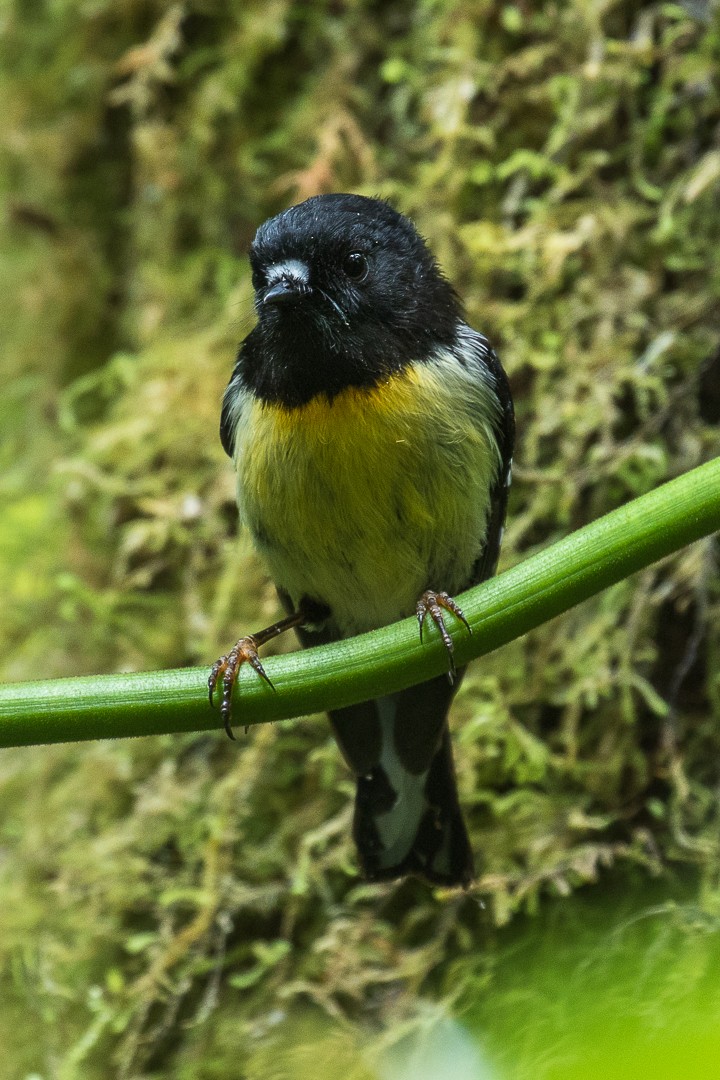Tomtit
A species of Australian Red Robins and Allies Scientific name : Petroica macrocephala Genus : Australian Red Robins and Allies
Tomtit, A species of Australian Red Robins and Allies
Botanical name: Petroica macrocephala
Genus: Australian Red Robins and Allies
Content
Description General Info
 Photo By Francesco Veronesi , used under CC-BY-SA-2.0 /Cropped and compressed from original
Photo By Francesco Veronesi , used under CC-BY-SA-2.0 /Cropped and compressed from original Description
The tomtit is a small (13 cm, 11 g) bird with a large head and a short bill. The male North Island subspecies has black head, back, wings (with a white wing-bar), and a white belly. The subspecies from South Island, the Chatham Islands, and Auckland Islands are similar, but have a yellow band across the breast between the black head and white belly. The females are brown instead of black. The Snares Island subspecies is entirely black, and is known as the black tit. The island subspecies of tomtits show a striking variation in body size, being considerably larger than their mainland relatives, a tendency known as the Foster's rule or the island effect. Birds from the main islands weigh around 11g, compared with birds from Snares Island, which weigh in at 20 g. 
Size
13 cm
Nest Placement
Tree
Feeding Habits
Tomtit's diet consists primarily of invertebrates, especially insects, occasionally complemented by fruit. Tomtit forages at various heights but tends to prefer mature forest understorey or the ground in different habitats. Characteristic feeding behaviors include pouncing, sally-striking from perches, gleaning without disturbing foliage, and some aerial hunting. No unique foraging on leaves is observed.
Habitat
The tomtit occupies a diverse range of habitats, primarily native forests which encompass mature podocarp-broadleaf ecosystems, as well as highland southern beech forests. They are adaptable, utilizing mixed forests and shrublands dominated by manuka and kanuka. In addition to natural environments, tomtit can be found in exotic pine plantations, and they sometimes venture into farmlands, parks, and gardens. Coastal regions with tussock grassland, scrub, and rock interfaces are also within their habitat scope.
Dite type
Insectivorous
General Info
Feeding Habits
Bird food type
Behavior
The tomtit is mostly an insectivore, feeding on small invertebrates, such as beetles, caterpillars, spiders, moths, weta, earthworms, and flies. Fruit is taken during the winter and autumn. Most subspecies feed in vegetation, waiting on a perch and watching for prey. Insects are also gleaned from branches and leaves. The Snares subspecies feeds on the ground as well, in a similar fashion to the North or South Island robins. 
Species Status
Not globally threatened.